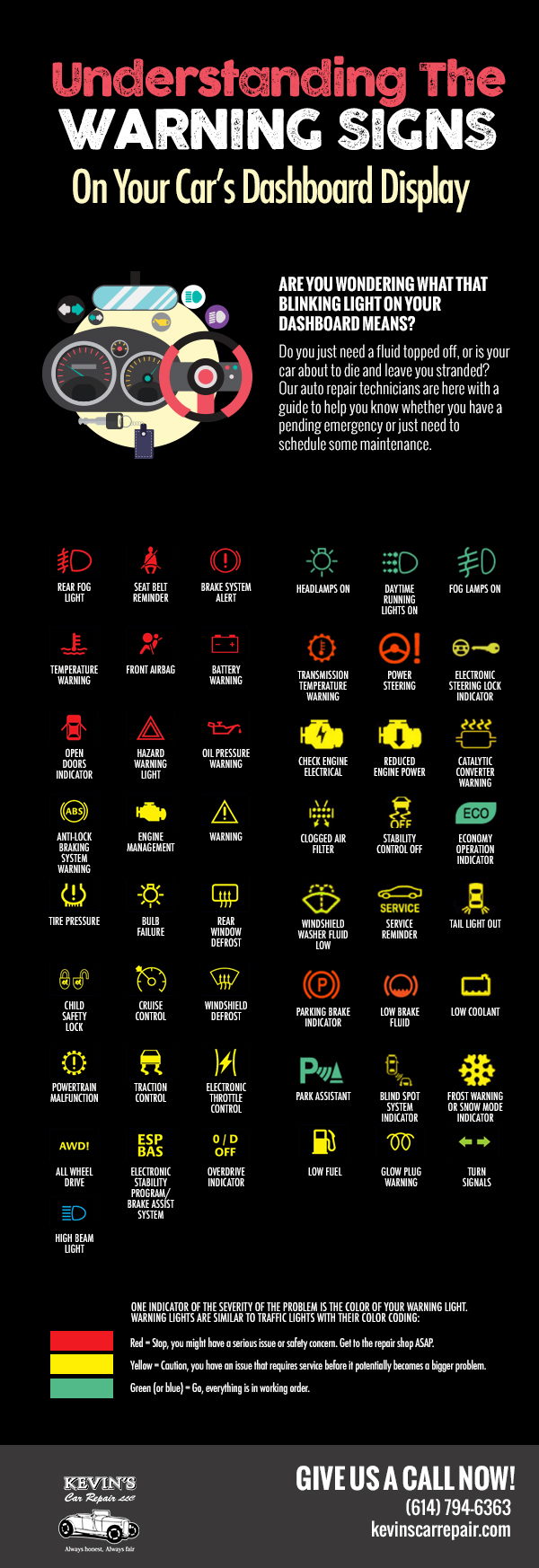Interested In Understanding The Warning Lights On Your Car'S Dashboard? Discover Their Significance For Your Automobile'S Safety And Security And Total Condition
Interested In Understanding The Warning Lights On Your Car'S Dashboard? Discover Their Significance For Your Automobile'S Safety And Security And Total Condition
Blog Article
Personnel Author-Termansen Torres
When you lag the wheel, those radiant warning lights on your dashboard can be a little bit bewildering. Do you understand what they're attempting to inform you regarding your car's wellness? Recognizing the relevance of these lights is essential for your security and the long life of your lorry. So, the next time one of those lights pops up, would not you intend to decipher its message precisely and take the needed actions to resolve it?
Common Caution Lights and Interpretations
Recognize common warning lights in your automobile and recognize their definitions to ensure safe driving.
One of the most normal warning lights consist of the check engine light, which signifies concerns with the engine or exhausts system. If this light comes on, it's critical to have your car checked quickly.
The oil pressure alerting light suggests reduced oil pressure, calling for prompt focus to prevent engine damages.
A blinking battery light could suggest a defective charging system, potentially leaving you stranded otherwise dealt with.
The tire stress monitoring system (TPMS) light notifies you to reduced tire stress, affecting car security and fuel performance. Ignoring this might bring about dangerous driving problems.
The ABS light indicates an issue with the anti-lock braking system, jeopardizing your ability to stop swiftly in emergencies.
Finally, the coolant temperature level alerting light warns of engine overheating, which can lead to extreme damages otherwise settled quickly.
Recognizing these common warning lights will help you deal with problems promptly and keep secure driving problems.
Importance of Prompt Focus
Comprehending the usual warning lights in your auto is only the very first step; the value of promptly resolving these cautions can not be emphasized sufficient to ensure your safety when driving.
When a caution light brightens on your dashboard, it's your auto's method of connecting a potential issue that requires attention. Ignoring these cautions can bring about more serious issues later on, jeopardizing your safety and security and possibly costing you more in repairs.
Trigger focus to alerting lights can protect against breakdowns and crashes. For instance, a blinking check engine light might indicate a misfire that, if left neglected, could cause damage to the catalytic converter. Addressing this promptly can save you from a costly repair.
Likewise, a brake system warning light may signify reduced brake fluid or worn brake pads, crucial components for your safety and security when driving.
DIY Troubleshooting Tips
If you observe a caution light on your dashboard, there are a couple of DIY troubleshooting ideas you can try before seeking expert help.
The primary step is to consult your cars and truck's guidebook to recognize what the particular warning light shows. Often the issue can be as easy as a loose gas cap activating the check engine light. Tightening up the gas cap might solve the trouble.
car grooming nz is a reduced battery, which can set off numerous warning lights. Checking https://air-lift-performance40617.ja-blog.com/29999692/intrigued-in-the-world-of-automobile-describing-products-check-out-the-key-tools-and-specialist-tips-that-can-enhance-your-detailing-capabilities-from-scratch for deterioration and guaranteeing they're protected might repair the problem.
If a caution light continues, you can try resetting it by separating the auto's battery for a couple of mins and then reconnecting it. Additionally, examining your automobile's fluid degrees, such as oil, coolant, and brake liquid, can aid repair alerting lights connected to these systems.
Conclusion
Finally, understanding your cars and truck's warning lights is important for keeping your car running smoothly and securely. By without delay dealing with these signals and knowing what they imply, you can prevent expensive repair services and potential failures.
Remember to consult your car's manual for specific details on each advising light and take action appropriately to guarantee a trouble-free driving experience.
Stay educated, stay risk-free on the road!
